Picture from Rage.com
Instead of engaging in my typical St. Patrick’s Day activity of beer drinking and social events, I had the opportunity to do something vastly different this year. I was invited to go on a tour with the Philippines Christian Foundation (PCF), an organization that is helping the poorest of the poor that live in Manila’s garbage dump called Tondo. There are currently over 1.5 million people that live and scavenge at Tondo, roughly 12% of Manila’s entire population.
PCF has designed a variety of initiatives to help this population move beyond life at Tondo. Their most recent project is a brand new school facility located on the dump site. What’s so innovative about this school is that it was constructed entirely of donated shipping containers, which were then coated in concrete, as you can see in this next picture (which is how we viewed it). Incredible, isn’t it?
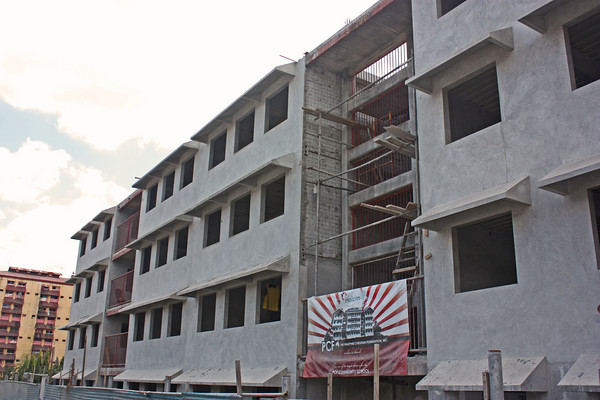
Because there is a lot of pressure on the children to bring in income for the family, parents were forcing the children to scavenge instead of going to school. To combat this, PCF designed a points system in which various amounts of rice and canned goods are given out each week to kids based on attendance, good hygiene, and clean uniforms. This has dramatically reduced the attendance problem, as the children are now able to bring home their contribution by going to school. Again, sheer brilliance!
There is also a daily feeding program on the site that provides all children with breakfast and lunch. The children are weighed each day and if found to be underweight, given an additional afternoon snack. Opportunities can be found at the PCF website to sponsor a child to eat.
Health is also of top concern. Kids receive a vitamin each day and de-worming treatments are given out several times a year. A recent birthing center was added at the dump site as well, to assist with pre-natal care and deliveries. Housing initiatives are in full swing too and sponsorships of $300 can provide a new home for a family of 3 on the site, getting them out of the squalor of their shanty.
The final component of PCF is a livelihood project that teaches them how to make items out of trash. Bags are made out of juice cartons (my sisters each got one for Christmas) and beaded jewelry is made out of magazine pages. I was able to get some stunning jewelry to take home with me. It is truly incredible what they are doing, as it teaches them new skills beyond scavenging.
The school is located on the land of a previous dump site that is affectionately titled “Smoky Mountain”. As you can see in the picture above, there is constant smoke rising from the mountain. What you may not have guessed though is that the smoke is actually methane gas, caused by all the garbage deteriorating below. My eyes were burning and tearing up after just 10 minutes near it. Imagine living there day and night?
I nearly gagged when I saw this. Contained in these bags are chicken bones with small amounts of meat still on them. They were pulled out of garbage bins, re-cooked, sauced and sold for 50 cents a bag. I wonder how many pieces of my leftover Jollibee chicken scraps have ended up in these bags?
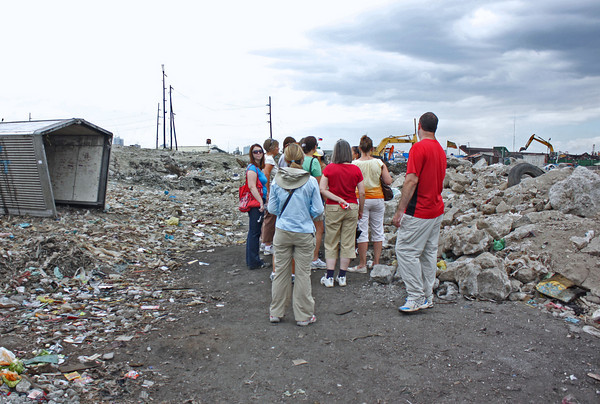
So I’m sure you’re wondering why so many people end up at the dump. The cycle works something like this. The dream for most Filipinos is to move from the provinces to the big city of Manila and then eventually get a Visa and move to the United States. What happens though is that they leave the province and come to Manila, attempt to find a job without success and then eventually end up at the dump to make their living by scavenging.
So why don’t they just go back to the provinces where life was better? Well, the Asian concept of “saving face” comes into play here and unless they’ve made something of themself, they do not feel that they can return (in shame) to their home. And so the population of the dump continues to grow….
As you can see in my pictures, the Tondo children really captured my heart. I will never forget the moment captured in this picture above as two children scurried up the garbage pile with their trash bag, fighting over who got to hold the bag. My heart still remains heavy 24 hours later and I feel compelled to do one final post on Tondo tomorrow. I hope you will continue reading about these courageous people and think about what you may do to fight poverty in your own community.
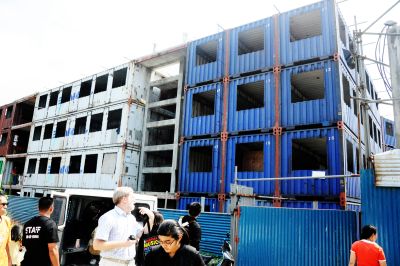
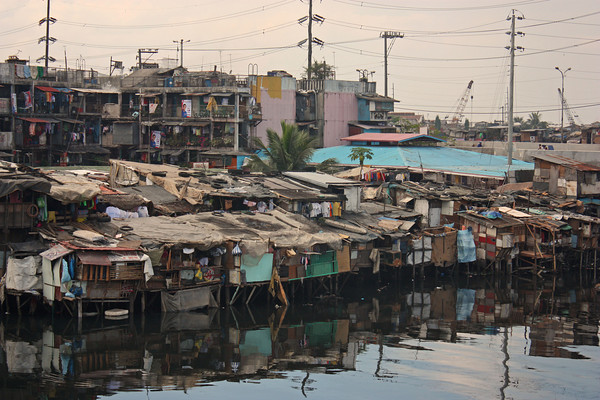
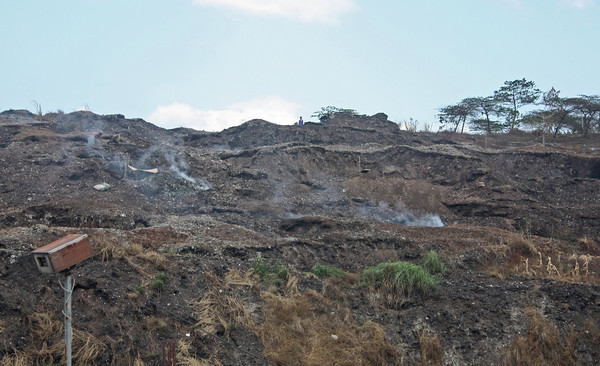
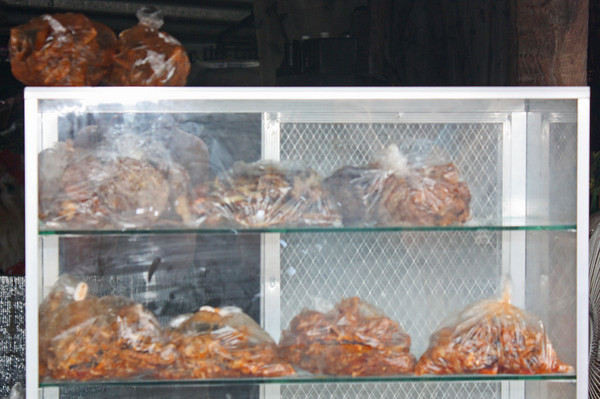
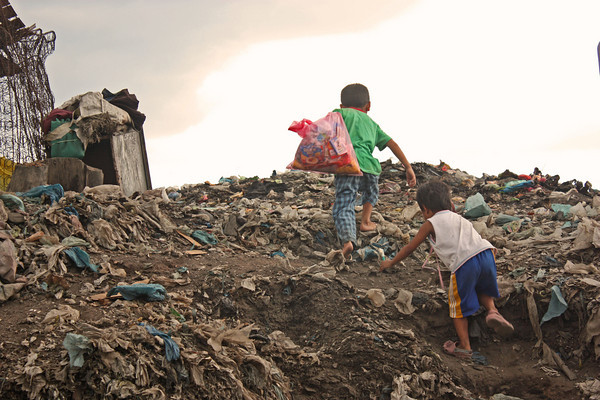
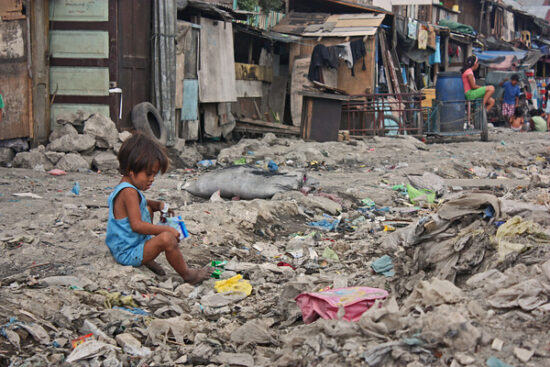

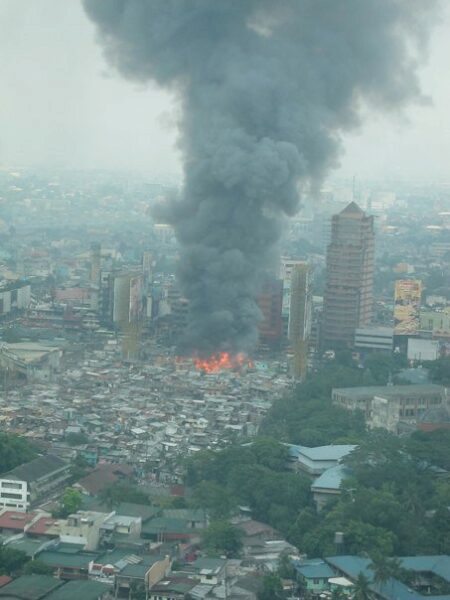
It’s too bad the government and a non-profit couldn’t team up, sell the methane rights to a contractor who could capture and sell the methane, and then use the proceeds to assist the people who live at the dump.
In fact, look at what I just found:
http://eponline.com/articles/2010/01/11/money-available-for-methane-reduction-projects.aspx?admgarea=ht.globalwarming
The Philippines are on the list of countries available for the project.
In fact, here is a grant project for recapturing methane and the Philippines is on the list.
http://eponline.com/articles/2010/01/11/money-available-for-methane-reduction-projects.aspx?admgarea=ht.globalwarming
ELS, now that is some solid economic reasoning. I’ll throw it out to PCF just in case they haven’t considered it. Who knows, maybe it is possible (although government leaves a bit to be desired here from a corruption standpoint…)
Nice work – I will put these together and send them to my contact. Appreciate you taking the time to do something. I’ll keep you posted!
Sorry for the duplicate posts. It looked like they didn’t take.
Anyway, while I know *nothing* about the law or corporate structures there, I could give you a back of the napkin (“big picture”) idea on how to possibly structure such a thing as a public / private partnership. I was so taken by the photos and your experience, and at the same time was aware of landfill methane recapture in my community, that it seemed to make sense (assuming it wouldn’t be exploited for the wrong reasons).
I really appreciate you sharing your experience. I can only imagine how depressing / emotionally exhausting / inspiring it was.
No worries. I was talking to a friend that volunteers there and it sounds like the biggest problem would be someone to take on the initiative, as they already have so many projects going. If something does materialize, I’ll connect back with you to get input on how it may be started. Thanks…
Although “Smokey Mountain” is probably the worst, there are many other places that have these heartbreaking scenes in Manila. There are also many homeless families who live under bridges and on the streets. The packed food that you saw are called “batchoy”, some of the homeless people wait for the fast food chains to close and throw out their garbage for the day. They then dig in the garbage bags and look for the food that still have some meat or are still good and recook with whatever sauce they have, often soy sauce. It is truly sad that many of my fellow Filipinos live this way.